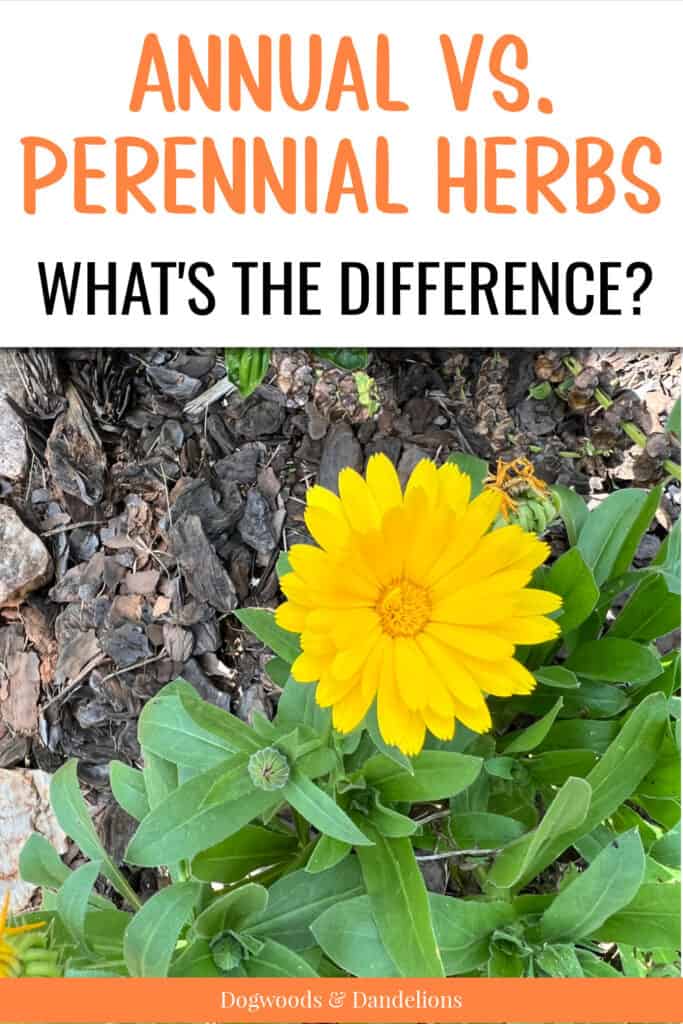Annual vs. Perennial Herbs – What’s the Difference?
There are many herbs you can grow in your backyard garden. But do you know which ones are annuals and which ones are perennials? And there are a few that are biennials.
Let’s explore the difference between annual vs. perennial herbs (and biennials too) so you can grow some culinary herbs in your own garden.
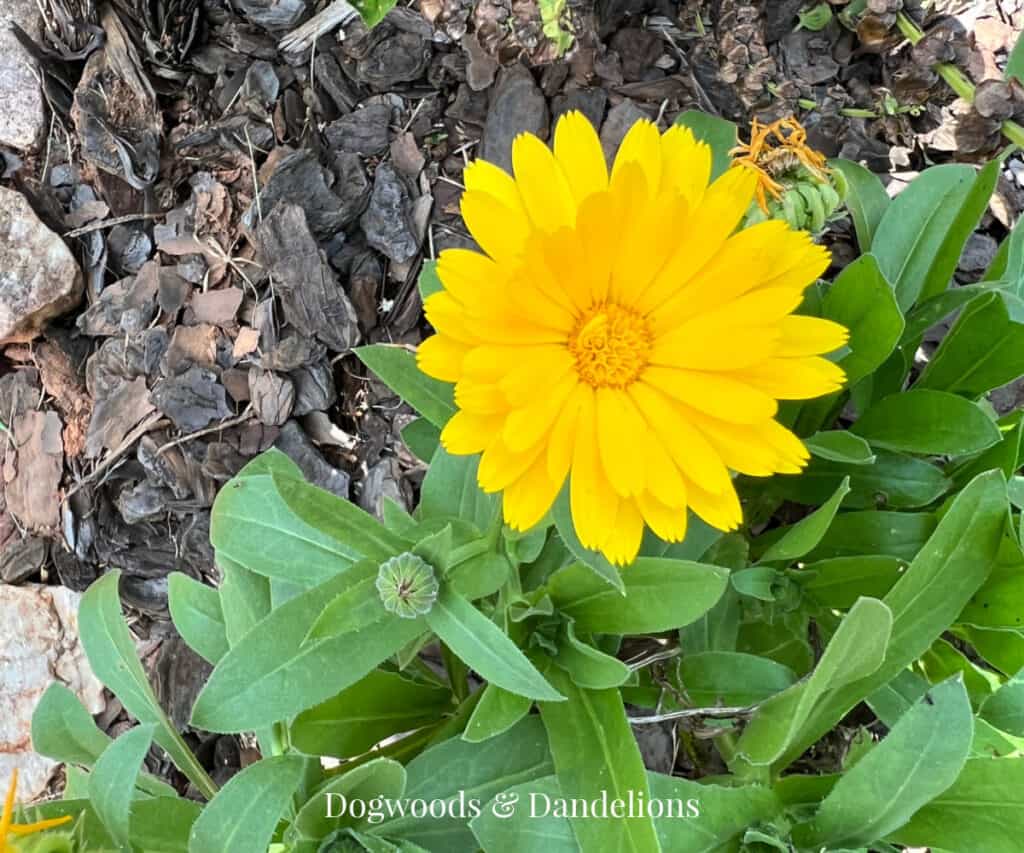
Affiliate Disclosure: Please note that some of the links in this article may be affiliate links and I may receive a small commission if you purchase something through a link. It will not change your cost. As an Amazon Associate, I earn from qualifying purchases. For more information, see my disclosures page.)
What are Perennial Herbs?
Perennial herbs are herbs that will come back every year. You can plant them once, take care of them, and they will either stay green all winter or will regrow when the temperature warms up in the spring.
In contrast, annual herbs are herbs that only live for one year. They will have to be replanted in the garden each year unless they readily self-seed.
Biennial herbs are herbs that will live for 2 years.
A few herbs may be annuals or perennials depending on your climate. These are often called tender perennials, while hardy perennials tend to survive cold weather in most climates.
For instance, rosemary is a perennial herb where I live in North Carolina, but further north, rosemary often has to be grown as an annual plant unless the plant is brought indoors for the winter.
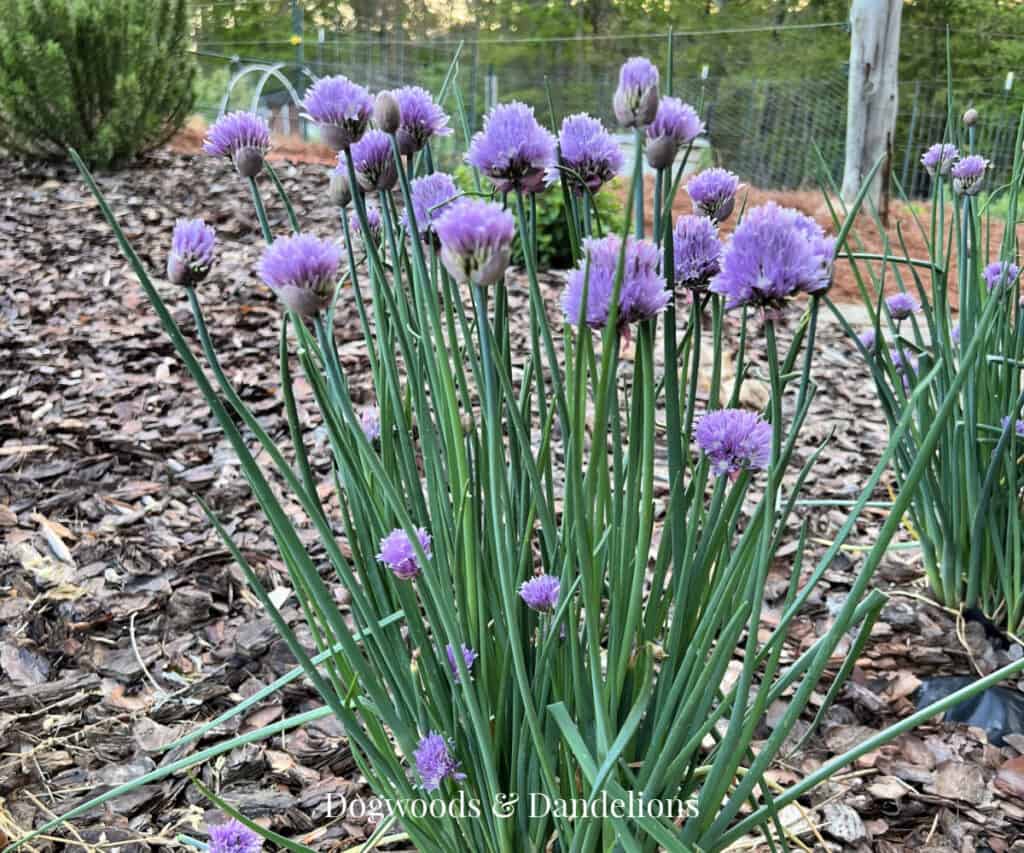
List of Perennial Herbs
The following is a list of herbs that are perennials in most climates.
- anise hyssop (Agastache foeniculum)
- bay laurel (Laurus nobilis)
- bee balm (Monarda didyma)
- catnip (Nepeta cataria)
- chives (Allium schoenoprasum)
- fennel (Foeniculum vulgare)
- garlic (Allium sativum) – Is considered a perennial but is usually grown like an annual.
- garlic chives (Allium tuberosum)
- horseradish (Armoracia rusticana)
- hyssop (Hyssopus officinalis)
- lavender (Lavandula angustifolia)
- lemon balm (Melissa officinalis)
- lemon verbena (Aloysia triphylla)
- lemongrass (Cymbopogon citratus) – A tender perennial but does not tolerate frost so it is grown as an annual or brought indoors for the winter in most climates.
- lovage (Levisticum officinale)
- Mexican oregano (Lippia graveolens)
- marjoram (Origanum majorana) – is a tender perennial usually only hardy in zones 9-10 but can be potted up and brought indoors for the winter.
- mint (Menta spp.)
- oregano (Origanum vulgare)
- purple coneflower (Echinacea purpurea)
- Roman chamomile (Chamaemelum nobile)
- rosemary (Rosmarinus officinalis) – A tender perennial. It is usually grown as an annual in northern climates.
- saffron (Crocus sativus)
- sage (Salvia officinalis)
- stevia (Stevia rebaudiana) – A tender, short-lived perennial in most climates. However stevia is sensitive to frost so most gardeners will need to grow stevia as an annual herb, especially since production declines after the first year.
- tarragon (Artemisia dracunculus)
- thyme (Thymus spp.)
- turmeric (Curcuma longa)
- winter savory (Satureja Montana)
- yarrow (Achillea millefolium)
Get my list of the most popular herbs for beginners below.
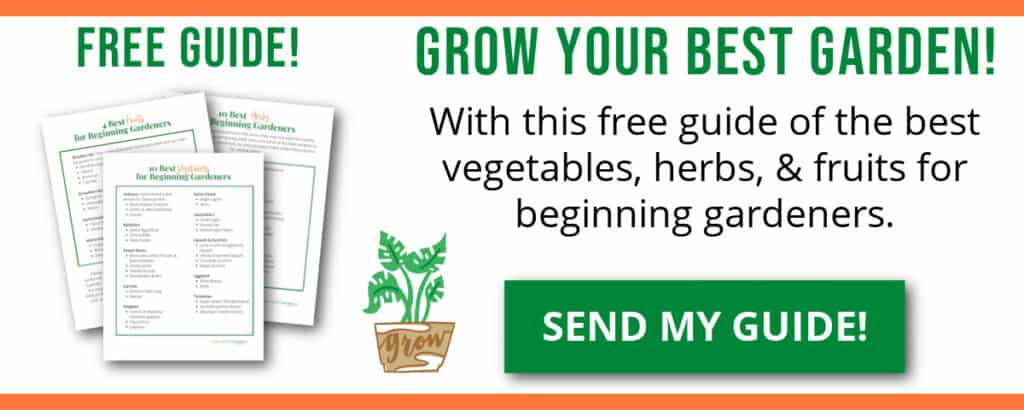
Annual Herbs
These herbs are usually grown as annual plants. They will need to be planted each year.
- basil (Ocimum basilicum)
- black cumin (Nigella sativa)
- borage (Borago officinalis)
- calendula (Calendula officinalis)
- chervil (Anthriscus cerefolium)
- German chamomile (Matricaria recutita)
- cilantro/coriander (Coriandrum sativum)
- dill (Anethum graveolens)
- nasturtium (Tropaeolum majus)
- parsley (Petroselinum crispum) – A biennial plant that is usually grown as an annual.
- summer savory (Satureja hortensis)
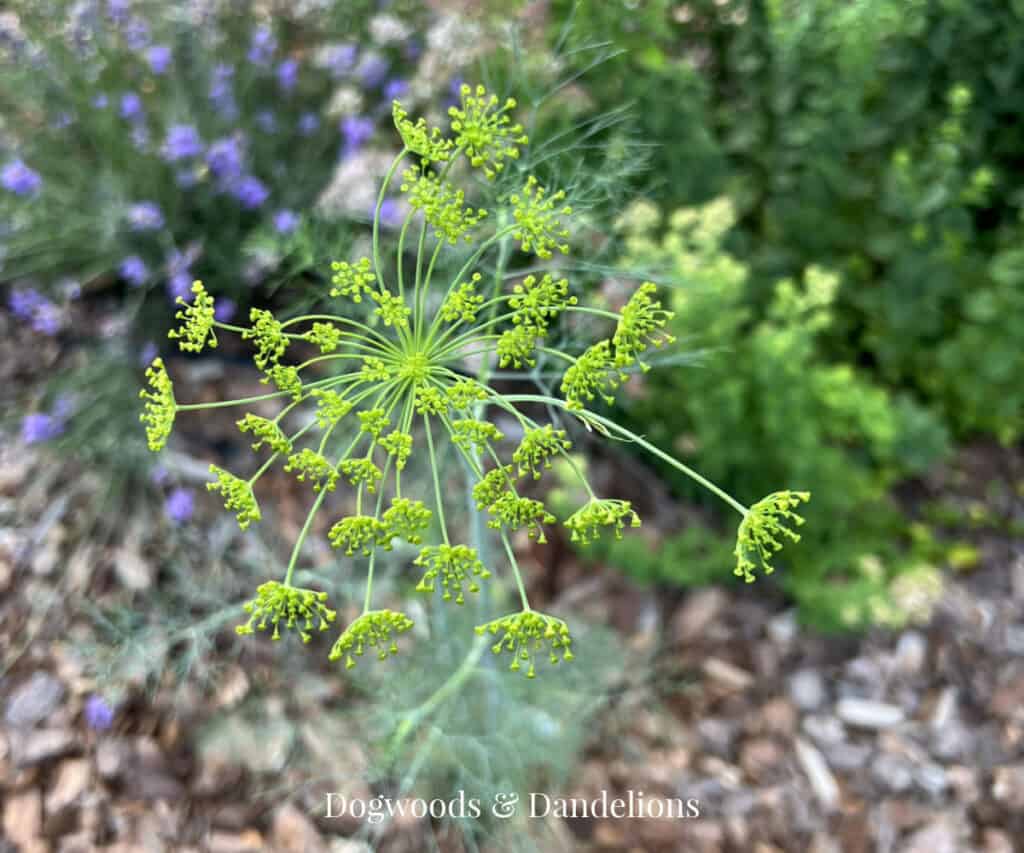
Biennial Herbs
- caraway (Carum carvi)
- parsley (Petroselinum crispum) – Both flat-leaf parsley and curly parsley are biennials that are usually grown as annuals.
Why Grow Your Own Herbs
You may be wondering if growing your own herbs is worth it. I can say, it definitely is.
Those little clamshell packages of fresh herbs at the store are very expensive and many times, you don’t use the entire package before they go bad. That is throwing money down the drain.
For just a few bucks you can buy a small tub or container, some potting soil, and a few herb plants and save yourself a lot of money over the next growing season.
How to Grow Herbs
Most herbs are relatively easy to grow in well-drained soil and many tolerate poor soil fairly well as long as the soil has good drainage. The majority of herbs will need full sun which is usually defined as at least 6 – 8 hours of sunlight each day.

You can also just add some herbs to your vegetable garden. I tend to mix in basil plants wherever I have a free sunny spot.
Just be sure to plan the location of your herbs or herb garden carefully, especially since many herbs are perennial plants and will be in the same location for many years to come.
A few herbs can also make a great addition to an existing flower bed quite easily. Many of the green leaves provide a beautiful contrast to flowering annuals and shrubs.
And some herbs even have pretty flowers of their own like calendula, dill, chives, and the edible flowers of the nasturtium. And herbs like echinacea have been grown in the landscape for years just for their purple flowers.
Of course, you can also easily grow most herbs in containers. And if you live in colder climates, growing herbs in containers allows you to bring them indoors during the winter months so you can have fresh herbs all year.
And you can even plant several herbs together in the same container. Many herbs have similar requirements so growing them together usually isn’t a problem.
If you are new to gardening, I recommend buying a couple of herb plants from your local hardware store or nursery. Occasionally, you can even find plants in your grocery store.
Plant your herbs in a potting soil mix and keep the soil moist, but not overly wet. Be sure your containers are in a sunny location. If it gets above 90 degrees consistently in the afternoon, your herbs may appreciate a bit of partial shade in the late afternoon.
How to Harvest Herbs
It is a good idea to harvest most herbs in the late morning after the dew has dried. Late morning is when the herbs will have the most aromatic leaves and the highest concentration of essential oils in the leaves and flowers.
For herbs that bloom, like basil and oregano, it is best to harvest the herbs early in the spring or summer before the flower buds start forming.
However, I realize this isn’t practical for everyone. I tend to run out to the garden while I’m cooking supper to grab a stem or two or snip a few fresh leaves of various herbs to add to my dishes.
But if you are harvesting herbs to preserve for later, you will get the best flavor by harvesting the herbs as soon as the dew has dried.
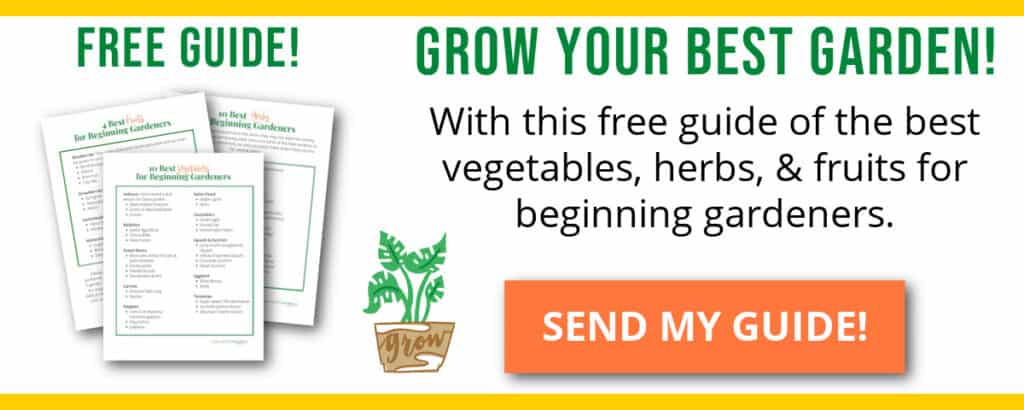
How to Use Herbs
Herbs have a variety of culinary uses. Fresh herbs can be used in pasta sauce, sprinkled on vegetables and meats, and used to add flavor to eggs and fruit salads. Many herbs can also be eaten on their own as greens in a salad.
Herbs can also be dried to store and use in recipes during the winter or when fresh herbs aren’t available. I tend to dehydrate mine (This is the dehydrator I have that has worked well for me for many years.) and store them in Mason jars for easy access.
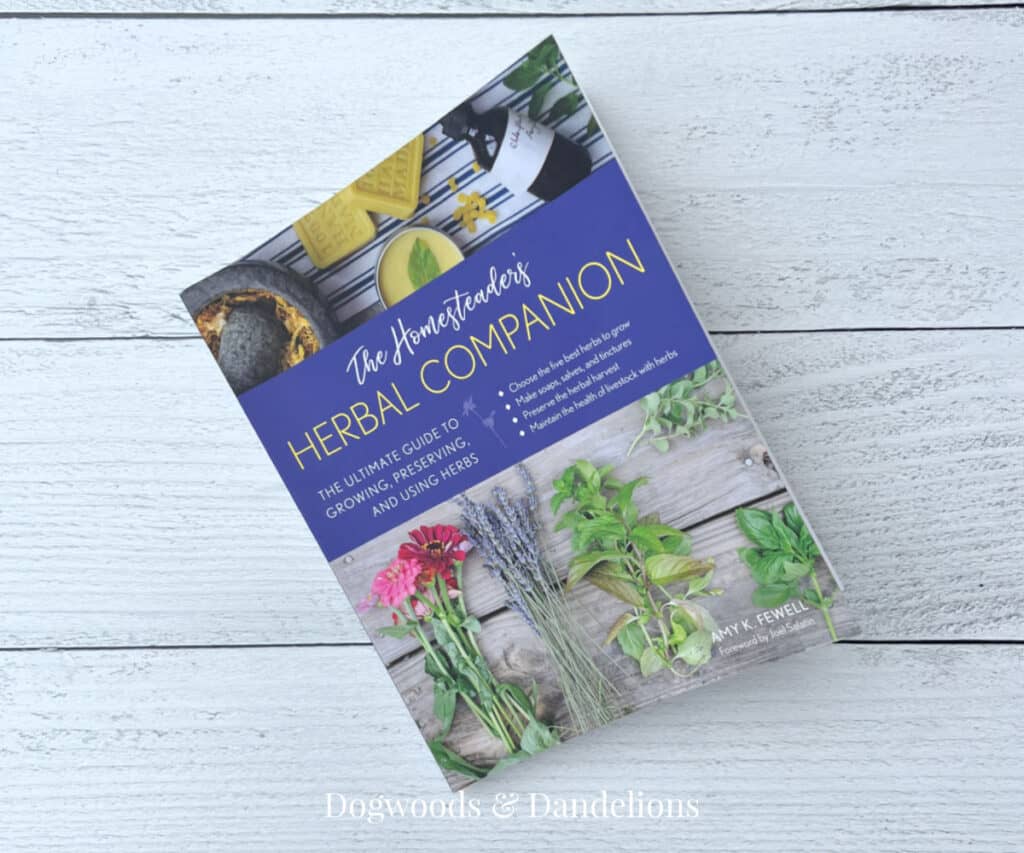
You can make herbal teas with many herbs as well as soaps, salves, and tinctures. To learn more about the medicinal value of herbs and their uses, I highly recommend the book The Homesteader’s Herbal Companion by Amy K Fewell. This is a great resource for beginners hoping to get the most out of their herb garden.
So now that you know how to grow herbs and the difference between annual vs. perennial herbs, I hope you’ll try growing a few this year. You can save yourself some money and anything you grow yourself always tastes so much better.
Related Posts
- How to Grow an Indoor Herb Garden
- 10 Best Herbs for Beginners to Grow
- How to Grow Vegetables in Containers
